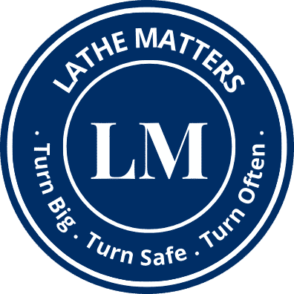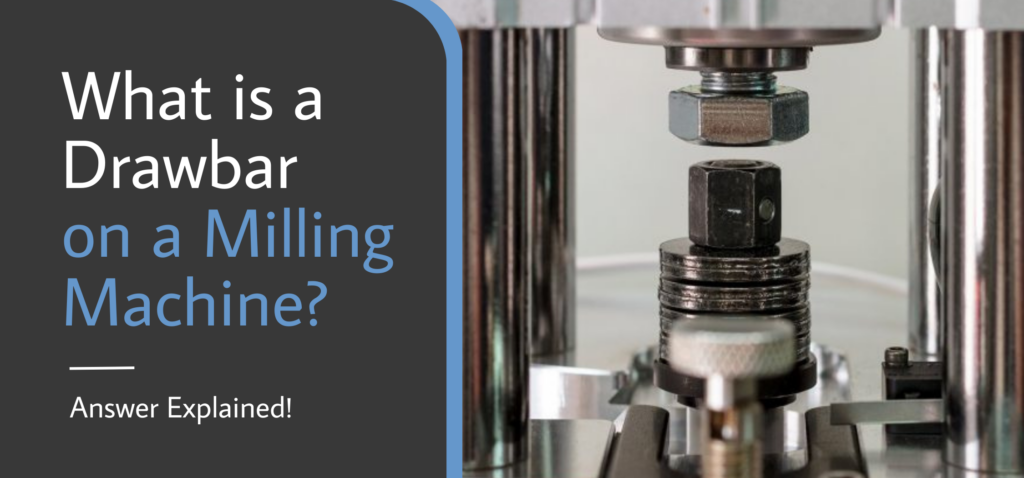Disclaimer: As an Amazon affiliate, I may earn a small percentage from qualifying purchases. This is at no extra cost to you. Learn more here.
Last Updated on February 28, 2023 by Charles Wilson
Are you a machine shop owner or worker who frequently uses a milling machine for drilling, turning, and cutting aluminum, brass, or steel?
I’m sure that at some point, you’ve wondered what each part does and what roles they play in ensuring machines work properly and for a long time.
It’s undeniable that knowing these details can help you take better care of milling machines, but if you’re kind of new to milling or just learning what each part does, we’ve got you covered.
Let’s answer the intriguing question: What is a milling machine drawbar? We’ll look at its importance, uses, and how to best utilize it.
Key Takeaways:
- This mill machine part is responsible for clamping the tool holder and putting a load of force on the spindle shaft. It does this by connecting with the spring collet on one end and the handwheel on the other.
- This machine tool is essential because, without this part of the overall machine assembly, no force will be applied to the collet. Nothing will hold the tool holder in place, which means that the spindle won’t work either.
- In choosing the best drawbar for the mill machine, it is crucial to know what it is made of to ensure high durability. Some materials that can be considered are high-carbon steel, stress-proof steel, heat-treated alloy steel, and black oxide steel.
What is a Drawbar For on a Milling Machine?

A drawbar works like a clamp, connecting to the spring collet, with most of its body resting inside the spindle seat. This is why it is also sometimes referred to as a spindle drawbar.
Additionally, its tail end is connected to the handwheel as a drawbar forces the spindle to rotate.
This means the drawbar, placed in the spindle, holds and puts force onto the tool holder to which the morse taper is connected (the taper handles the actual tool).
Threaded-manual drawbars are used quite often. They usually require a wrench (used in maneuvering bolts), hammer, and some twisting and tapping before you can remove the cutting tool.
On the other hand, the power drawbar can be considered automatic.
The power drawbar uses compressed air to automatically perform the tightening and loosening of the spindle to release the cutting tool.
Moreover, a drawbar is an essential component that may make or break machine tools because of the following reasons:
- Putting too little or too much force on the drawbar (depending on the machine’s model) may damage the spring collet and the spindle.
- The damage mentioned above can loosen the pairing of the drawbar with the spring collet, which in turn can add another problem and variable to the spindle operation.
- All these lead to counterproductive spinning and cutting. Your machining works will be cut and shaped with less force and power, which could potentially ruin your workpiece.
FACT: A Morse taper is like the chuck in lathe machines. It’s built to exert a lot of force to retain every kind of tool at a specific angle, preventing side thrust while spinning the load. The chuck and the taper secure the tools so that the latter will not be released prematurely.
How is a Drawbar Used?

Mills require a drawbar to create force and power for a spindle, including the spindle nose, to rotate and work efficiently in producing different products and tools.
To use a drawbar, you will need to thread it at the back of a spring collet. In this sense, the drawbar secures the collet and helps hold and drag the latter to force and load the spindle to move.
The following materials and processes are needed for a complete drawbar experience:
- Stacking Belleville washers or die springs that make contact with a shoulder to place force on the drawbars
- The Brake lever is used in tightening the drawbar while the spindle nose continues to move during a machining operation
Belleville washers need constant maintenance as they can break after approximately two years.
This is common and needs to be attended to, as this example can leave the drawbar with unresolvable problems, such as changing its clamping force.
To address problems like this, add and change Belleville washers frequently, depending on your machining operation and design.
You must also have the following materials if you wish to secure the drawbar using a DIY assembly.
- Socket head cap screw
- Knockout cap
What is Drawbar Pull?
A DP pertains to the attainable pulling force or the ability of a horizontal tool to supply energy into the spindle once a drawbar’s been pulled.
Every action concerning the mill requires the identification of the DP, as proper bar force application will provide machining precision and a good-quality finish with every workpiece released.
How to Choose the Best Drawbar

Choosing the best drawbar means keeping certain considerations in mind, especially what material it is made of, as this factor defines the drawbar’s efficiency, durability, and longevity.
Some of the most common drawbars are made of the following:
- High carbon steel – This material is rated for strength and durability. It is tough and can survive and surpass the usual wear and tear.
- Stress-proof steel – This type of steel is resilient and makes drawbars more adaptable even with frequent tension. It’s also corrosion-resistant.
- Heat-treated alloy steel – This material features wear resistance and flexibility, which gives the tool much-needed strength.
- Black oxide steel – This steel has a black oxide coating that provides an added layer for the drawbar’s material to be thicker and more resistant to corrosion.
It is also essential to look into what drawbar fits your mill. The former is not a one-and-done tool, as there are different drawbars for every machine tool model.
They vary in these aspects:
- Bar size
- Hole diameter
- Outside diameter
- Thread length
- Hex length
- Material used
Frequently Asked Questions
Here are some answers to people’s most prevalent questions regarding drawbars and milling machines.
How is a Drawbar Measured?
A drawbar is measured from the point of connection with a collet until the end, before the handwheel.
Note that the measurement of its length does not extend to the spindle or the handwheel itself.
How Do You Calculate Drawbar Pull?
Calculating the DP force means applying this equation:
(Torque of the machine tool x Gear reduction) ÷ (Outer diameter ÷ 2)
This means multiplying the torque by the gear and dividing the product by the quotient of the outer diameter divided into two.
Remember that torque in this equation refers to the force or power generated when a spindle rotates.
This torque differs from the horsepower you can find in mill labels, as the latter refers to the revolutions per minute that the whole mill can run.
Do I Need a Drawbar?
Yes, you need a drawbar in automatic and manual mills for both machines to work, as both are threaded to connect with the spring collet and the handwheel.
This tool is used to apply force to power the spindle while keeping it secure. Without this, there can be no force to make the collet move.
Conclusion
Now that you know what a drawbar is, you should find it easy to go through a mill’s changing, maintaining, and using phases.
Just remember that a drawbar is a significant part of the machine’s entirety because it is responsible for putting force into the collet and spindle nose.
You need it to proceed with your cutting load and other work tasks.
With this information, it is crucial to take good care of the drawbars by frequently checking them, along with other parts, including the washer, to ensure more efficient machinery for milling.

